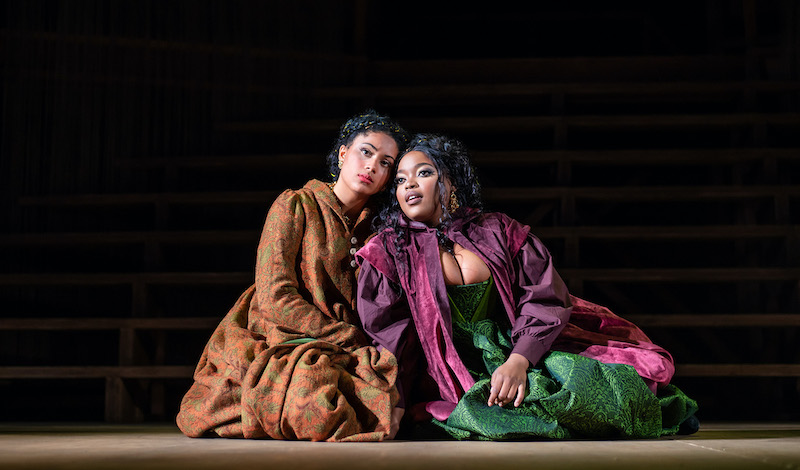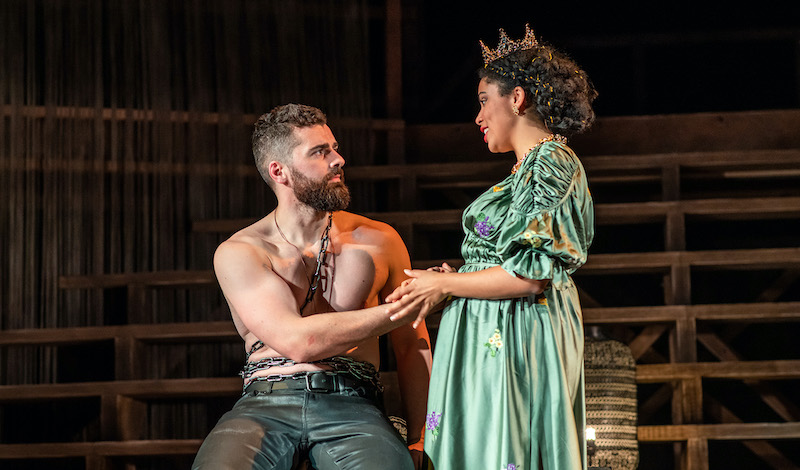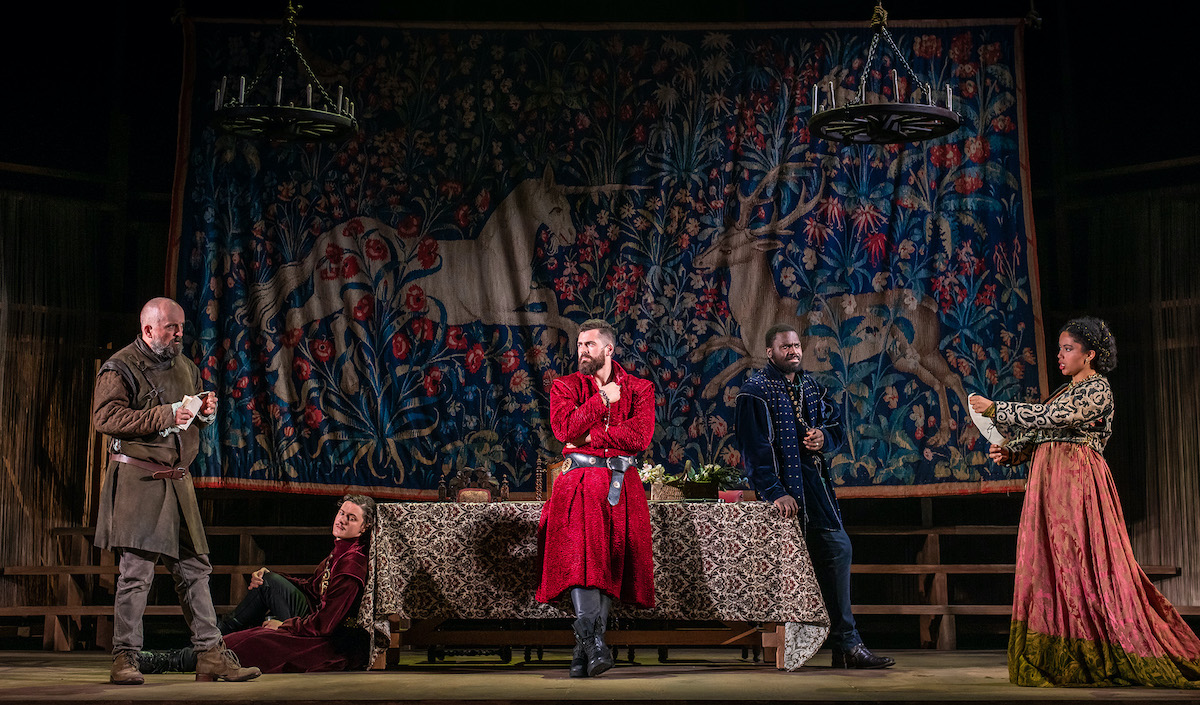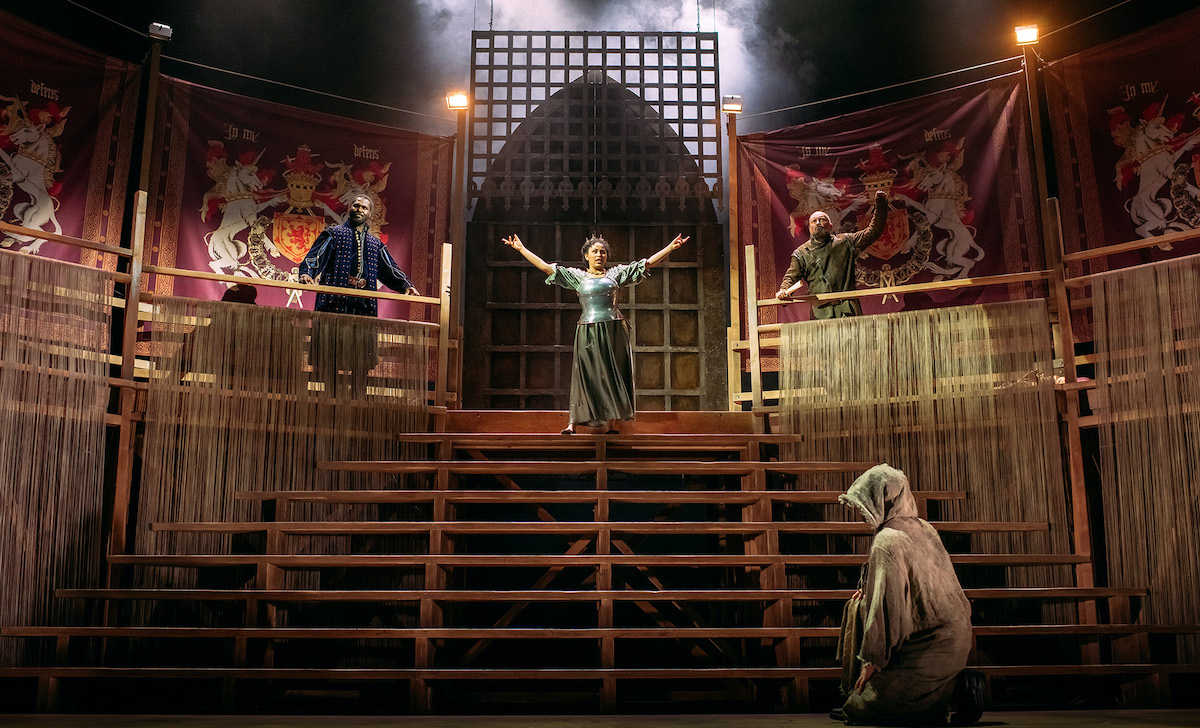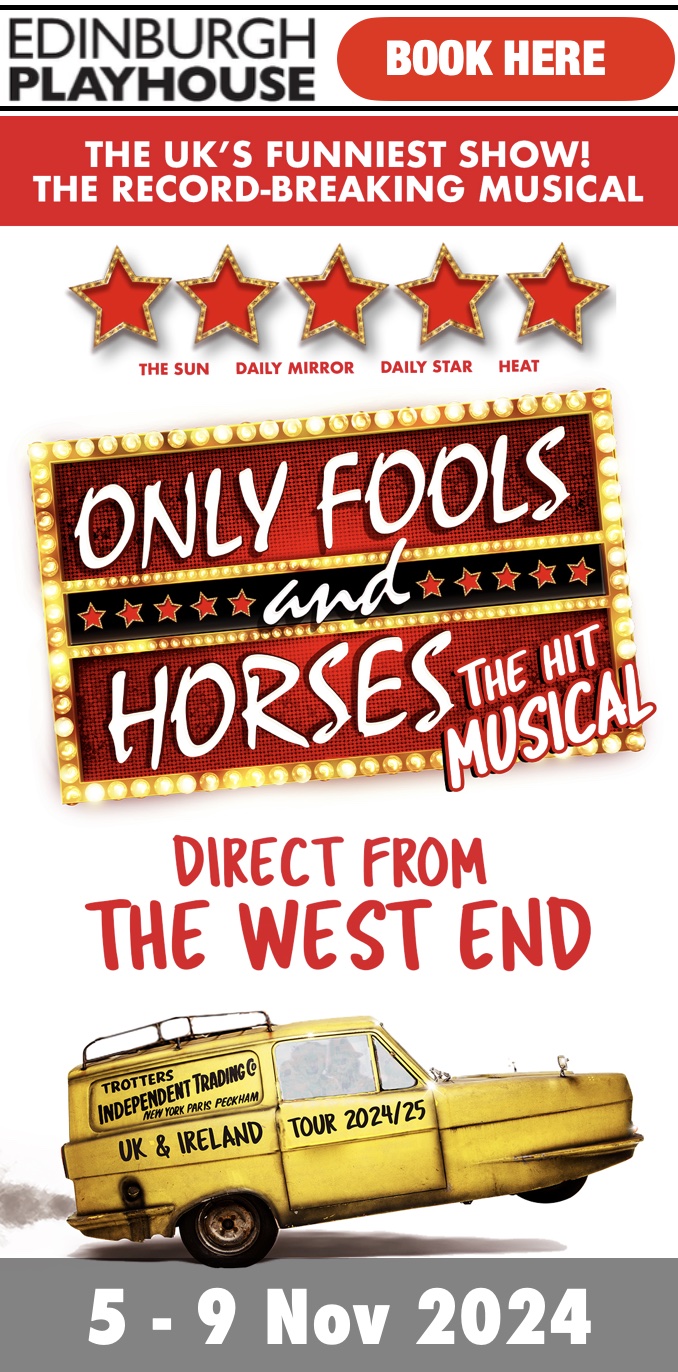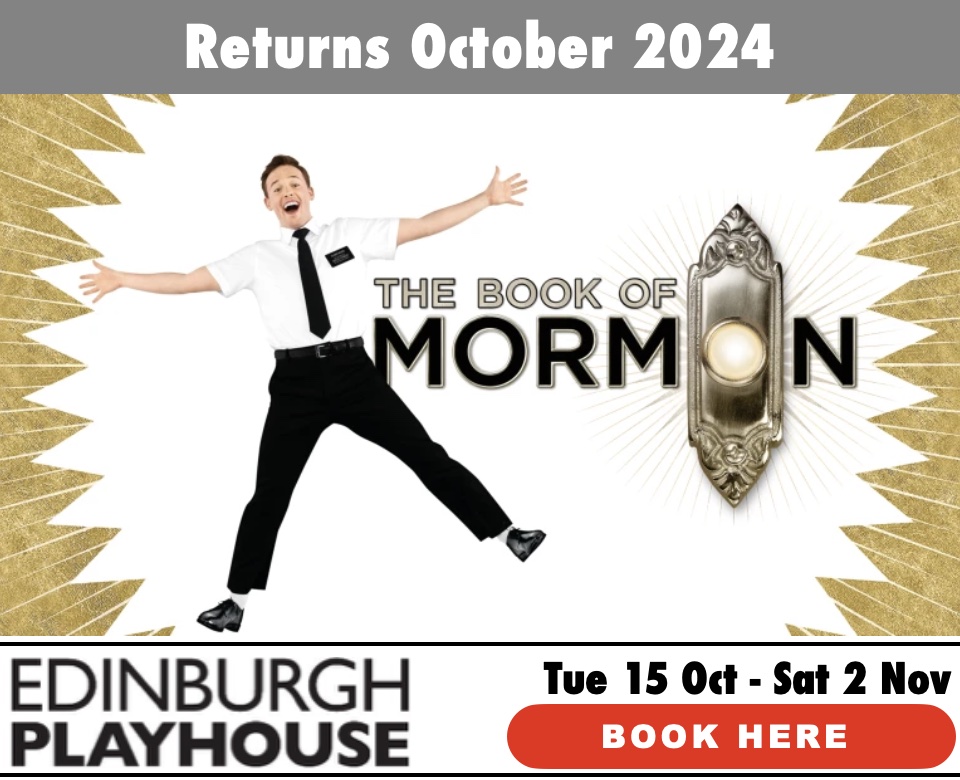James IV – Queen of The Fight
★★★★☆ Resonant
Festival Theatre: Fri 30 Sept – Sat 8 Oct 2022
Review by Hugh Simpson
James IV – Queen of The Fight at the Festival Theatre until Saturday and then on tour, is epic in scope and highly satisfying.
Following the hugely successful depictions of the first three Jameses by writer Rona Munro and director Laurie Sansom, it has been awaited with much impatience.
The latest production, by Raw Material and Capital Theatres in association with the National Theatre of Scotland, is once again hugely ambitious. If not everything about it comes off, it is largely successful – not least in what it has to say about contemporary Scotland.
Comparisons with Shakespeare’s history plays continue to be inevitable, not least because Munro appears set on completing an entire cycle all the way up to James VI.
The trouble with this continuing obsession with viewing the past as nothing but a line of monarchs is that in Shakespeare’s day the nature of kingship was still a live issue, as the security of the nation was still very much bound up with the crown.
royalty as spectacle
Now it is much more a matter of pageantry; Munro is well aware of this, as not only is much of the script concerned with the nature of royalty as spectacle, but James is not really the focus of the story.
Instead much attention is paid to the little-known but well documented presence of Black people at the Stuart court. Laura Lovemore and Danielle Jam play Lady Anne and Ellen, two ‘Moorish’ attendants thrown into the court’s power struggles.
These two characters are clearly Munro’s favourites; they are the only ones who get a truly defined character arc, and the scenes featuring them together are the most compelling of the play.
Lovemore’s poised, constantly aware Anne is far more regal than Sarita Gabony’s wonderfully petulant teenaged Queen Margaret. Jam, meanwhile, has a desperate knowingness that is utterly believable.
They both do justice to Munro’s constantly versatile and powerful dialogue, here enhanced with touches of Portuguese and Gaelic to go with the French, English and Scots.
elusive
Other members of the court are equally conscious of their precarious positions – Blythe Duff is beautifully spiky as Dame Phemy, Malcolm Cumming’s captured Lord of the Isles Donald has an attractively crumpled defeatism, and Thierry Mabonga’s Peter is a thoroughly fascinating performance of a character who remains frustratingly elusive.
Peter is one of those real people unexplained in the historical record, and his character is never developed as much as is promised. This is not the only sign that the play is just too short for all of Munro and historical consultant Dr Onyeka Nubia’s research.
The attempt to display the full diversity and spectacle of the court does not always come off, despite the best efforts of director Sansom, the talented ensemble, or Jon Bausor’s imposing design, all portcullis and giant upturned looms.
Instead, too much time is spent on fight scenes that, excellently staged as they are by Rachel Bown-Williams and Ruth Cooper-Brown, come to dominate proceedings.
The climactic battle, furthermore, is simply confusing with the underlying narrative, like much of Paul Leonard-Morgan’s composition or Dr Gameli Tordzro’s live music, often inaudible.
The motivation for Daniel Cahill’s muscular, energetic King James to put himself in such danger, when so much of his time was spent building up Scotland as an educational and military powerhouse, is also left unclear. But then, despite Cahill’s magnetism, this is not primarily his story; instead it focuses on the outsiders in the court.
splenetic, self-serving comic ferocity
In particular, the effect on them of an undoubtedly racist poem by William Dunbar, who is portrayed with a splenetic, self-serving comic ferocity by Keith Fleming. The evolution of the poem is shown somewhat tortuously but its effect is shocking, and its contemporary relevance horribly undeniable.
It is this modern resonance that is most convincing in this latest episode of a Scottish historical epic. That something so ambitious could be attempted under present circumstances, and create such a buzz, is worthy of great praise.
Running time: Two hours and 35 minutes (including one interval)
Festival Theatre, 13-29 Nicolson St, EH8 9FT
Friday 30 September – Saturday 8 October 2022
Tue – Sat: 7.30 pm; Matinees Thurs and Sat 2.30 pm
Tickets and details: Book here.
James IV – Queen of The Fight On Tour
Glasgow Theatre Royal, 282 Hope Street, Glasgow G2 3QA
Tue 11 – Sat 15 October 2022
Tue – Sat 7.30pm; Thurs, Sat: 2.30pm.
Tickets and details: Book here.
Dundee Rep, Tay Square, Dundee DD1 1PB
Tue 18 – Sat 22 October 2022
Tue – Sat 7.30pm; Thurs, Sat: 2.30pm.
Tickets and details: Book here.
His Majesty’s Theatre, Rosemount Viaduct, Aberdeen, AB25 1GL
Wed 26 – Sat 29 October 2022
Wed – Sat 7.30pm; Mats Thurs, Sat: 2.30pm.
Tickets and details: Book here.
Eden Court, Bishop’s Road, Inverness IV3 5SA
Wed 2 – Sat 5 November 2022
Evenings: 7.30pm; Thurs mat: 1.30pm; Sat mat 2.30pm.
Tickets and details: Book here.
MacRobert Arts Centre, University of Stirling, Stirling FK9 4LA
Wed 9 – Sat 12 November 2022
Evenings: 7.30pm; Sat mat 2.30pm.
Tickets and details: Book here.
ENDS








